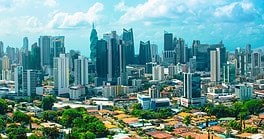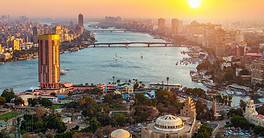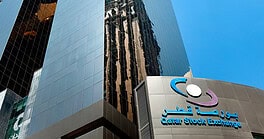China is leading as the world attempts to get back to business. It won’t be simple—even if the Covid-19 virus does not come roaring back.
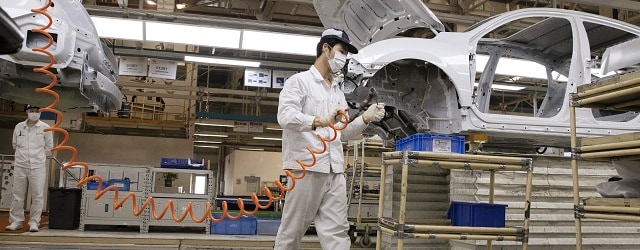
The scenes out of Wuhan, China, in early April were heartening: long lines of passengers leaving the city by train and the first flights taking off from the city’s airports after more than two months in lockdown. The epicenter of the pandemic in China was beginning the process of returning to normal.
Yet it wasn’t quite normal. The travelers all wore face masks, and officials took body temperatures before clearing passengers to board. There and elsewhere in China, travelers had to display a government-sanctioned cellphone app—the “Alipay Health Code”—that showed a green, yellow or red “traffic light” designation based on their risk status.
First to experience the contagion and first to shut down, China is now among the first to attempt to restart its economic engines, and the world is watching with bated breath. Medical experts have repeatedly cautioned that ending preventive measures too soon could lead to disaster. “Cases could easily resurge as businesses, factory operations and schools gradually resume,” cautioned Joseph T. Wu, at the University of Hong Kong School of Public Health.
Yet prolonged suspension of the economy wreaks its own havoc. Even Italy, the worst hit country in Europe, by May 4 was on Phase 2 of easing restrictions—allowing reopening of bookstores and children’s clothing stores as well as most factories. Giuseppe Valditara, an official of the Ministry of Education, Universities and Research, and a former Italian senator, tells Global Finance that while health experts wanted to keep an extended lockdown in place because of the high death toll in the country, Italian factories could not afford to stay shut for many more months.
It’s not either/or, of course. Economic health is directly tied to public health. When reopening, “make sure you are not starting another economic collapse,” warned researchers at the New England Complex Systems Institute in early May. “Premature relaxation of restrictions will guarantee loss of all that was gained.”
The news out of China, at least as of press time, gives cause for hope. The country’s purchasing managers’ index (PMI) rose to 52 in March (above 50 indicates growth) after falling to 35.7 a month earlier. Similarly, the nonmanufacturing PMI was at 52.3, up from 29.6 the previous month. By mid-April, a Chinese newspaper reported, cargo flights out of the country had returned to precrisis levels. German automaker Daimler reported on April 9 that Mercedes-Benz sales in China in March, nearly 60,000 units, was close to last year’s figure.
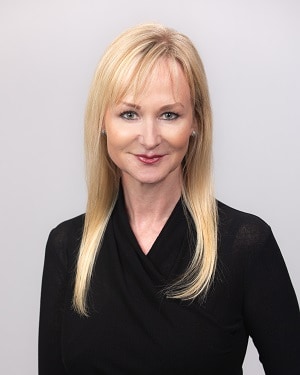 Orr, Anaplan: Access to cash is absolutely |
“We see early signs of a recovery in China,” Harald Wilhelm, Daimler’s finance chief, said on an April conference call, adding that the company’s manufacturing there is “already fully normalized, including the complete supply chain.”
Step by Step
Protocols and road maps are being developed on the fly. It is widely understood that reopening “is not going to be a light switch that we say, ‘OK, it is now June, July, or whatever, click, the light switch goes back on,’” as Dr. Anthony Fauci, director of the US National Institute of Allergy and Infectious Diseases told CNN, but must happen in stages.
Austria was one of the first European countries to ease its lockdown, employing a step-by-step approach that began in mid-April with reopening small nonessential stores that had been closed, expanding to to larger shops and shopping centers from May 1—while still requiring masks be worn in public and prohibiting large gatherings. Hard-hit Spain has allowed construction laborers, factory workers and some others to return to work, but kept restaurants and cafes shuttered.
Germany, started reopening in late April with small stores and car factories, followed in May by schools. Denmark reopened schools, but in shifts, and staggered its rush hour. Many expect China’s role on the world stage to change. “To some extent China will lead the global recovery, but the real key is to what extent we see the restrictions being lifted in the developed world,” says Jamie Thompson, head of macro scenarios at Oxford Economics.
China’s rebound seems to be taking the widely hoped-for V shape. Thompson says the country recorded -8.5% year-over-year growth in the first quarter; but it is likely to rebound to finish 2020 down just 0.2% for the year, before returning to vibrant 9% growth in 2021. Trivium, a research firm based in Beijing, estimated in mid-April that Chinese manufacturing had returned to about 80% of its precrisis levels, but that is likely to remain flat until demand from the rest of the world picks up.
“China’s path is going to be a leading indicator of the global economy’s path, but it doesn’t mean China is going to be the locomotive pulling the economy out of recession the way it did in the 2009 financial crisis,” says Andrew Polk, an economics researcher and partner at Trivium. “Chinese companies are not going to fully ramp up production as long as there is a global recession. They have no place to sell their goods.”
Stimulus Needed
From the outset, it was clear there would be an economic cost to the pandemic. Even as they juggled public health interventions and scrambled to acquire equipment, governments were thinking how to mitigate the impact on commerce.
“If we can keep people who are working attached to their business, that will really help in getting off to a rapid start once the shut-ins end and we reopen the economy,” Larry Kudlow, director of the White House’s National Economic Council, said in an online meeting with reporters promoting the first US rescue package.
Denmark was the EU’s most generous in replacing income for workers required to stay home, offering employers 75% of pay for up to 13 weeks under certain conditions. Other European countries also offered salary subsidies, with France, for example, paying $9.6 billion a month to keep workers from losing income.
Employers, too, were targeted for support. The EU adopted a roughly $500-$600 billion package of measures that included a guarantee fund for small and medium-sized enterprises (SMEs), an employment insurance fund and credit lines worth around $262 billion. “Companies must be able to start again as soon as the go-ahead is given, so access to extraordinary liquidity and credit is needed at this stage,” Valditara tells Global Finance. “In the meantime, salary payments to employees, and support to all those who lose their jobs and companies that risk closure must be guaranteed.”
In the US, the government passed a $2 trillion coronavirus relief package that included cash assistance for the unemployed and loans for SMEs, but was ineptly executed and ultimately delivered most of its benefits to entities and individuals that were already flush with cash, such as Harvard University. The funds designated for small employers ran out almost immediately and the US Congress soon approved more money and teed up a second round of relief, with some political leaders talking of a third in the pipeline.
Sara Baxter Orr, a former CFO for telecom giant Verizon Business Group, now global head of the CFO practice at IT services and advisory firm Anaplan, says that for most CFOs, the top priority right now in terms of preparing to return to normal is ensuring sufficient liquidity to survive the crisis. “Making sure they have access to cash is absolutely key,” she says. “Just maintaining payroll and company cash flow in the short term is critical, and then making sure there are reserves for the longer term.”
Most firms, she says, are analyzing various timelines for reopening, running through different scenarios and estimating when the huge demand shock will begin to ease. Companies that rely on retail sales in traditional outlets like malls may have to tear up their sales projections and start investing in digital.
New Rules at Work
Companies may find they also need to invest in some new policies and perhaps equipment. Robert R. Redfield, who heads the US Centers for Disease Control and Prevention, for example, says businesses need to step up cleaning procedures and ensure that employees practice social distancing while they’re at work. But US meatpacking plants shut down as workers got sick; the assembly line isn’t profitable with employeers six feet apart.
Another key component of the reopening process is testing. A number of countries, including Italy and Germany, have called for testing on a massive scale. Much hope lies with so-called serological testing, which uses a pin-prick of blood to identify antibodies that the body’s immune system produces to fight Covid-19. Such a test would identify people who have had the virus and recovered, which sometimes confers immunity.
Aaron Edlin, a visiting scholar at the University of Southern California’s Schaeffer Center for Health Policy and Economics, has called for the creation of a “certified recovered” document that workers could get after taking the antibody test. “Deaths have peaked in Italy and Spain, and several other European countries and will soon peak in the US,” he says. “That’s going to create an enormous pressure to open the doors and send everyone back to work.”
Edlin acknowledges that there may be too few recovered employees to get the economy back on its feet on their own—the latest models suggest that 0.5% to 5.5% of the population of most countries have been infected. Italy and Spain appear to have had rates near 10% of the population. But the truth is no one really knows. The hope is that random testing of a large sample will provide clearer data.
Some worry that antibody tests may create an underclass of workers who don’t have the antibodies and won’t be rehired immediately. But in countries like the Philippines, where at least 57 million people have been locked down by the epidemic, any kind of relief is welcome, says Aaditya Mattoo, chief economist for East Asia and the Pacific at the World Bank. “There might be resentment, but the ability of the state to make transfers to people is conditional on some revival of economic activity,” he says. Ultimately, the real problem may be that recovery does not always confer immunity.
Deutsche Bank analyst Luke Templeton looked at China’s experience in lifting its restrictions in Wuhan and surrounding Hubei province and concluded the rest of the world would see a gradual reopening over May and June. He expects that, by June, workers will have resumed their jobs, with retail stores and restaurants reopened, albeit with restrictions on density of people. He expects governments will continue to advise high-risk groups such as the elderly to continue social isolation.
A resurgence of infections remains a clear possibility. University of Washington professor Chris Murray, who heads the Institute for Health Metrics and Evaluation, warned on April 10 that if the US ended social distancing measures too soon, by July the infection rate could return to its April peak. China, Singapore and Japan all saw cases surge during April, although these surges were attributed to travelers bringing the virus from outside the country. On May 4, Russia saw its fourth straight day of record new cases—more than 10,000 per day—and extended isolation practices to May 11. Meanwhile, the state of Texas eased restrictions even as it broke its prior records for new cases and deaths.
Consultant firm McKinsey & Co. cautions in a March 30 briefing note that companies have to be prepared for a reduction in demand that lingers long past the end of quarantines. Many people will continue to restrict activities after official barriers have been raised and in spite of official reassurances. The virus may come back in a big wave of new infections. Or it could come as many small wavelets. Or it could be a new high tide.
Saying the world may be entering the biggest downturn since World War II, McKinsey warns that “the pendulum might not swing back fully once the outbreak has relented. Having experienced a new way of living, consumers are recalibrating their spending, increasing the likelihood that spending may permanently shift.”
In the end, that may be a good—or perhaps necessary—change. “We can’t open up the economy in the same way we did before, or we’ll be facing the same problems we did before,” Edlin comments. “We have to do it differently.”

